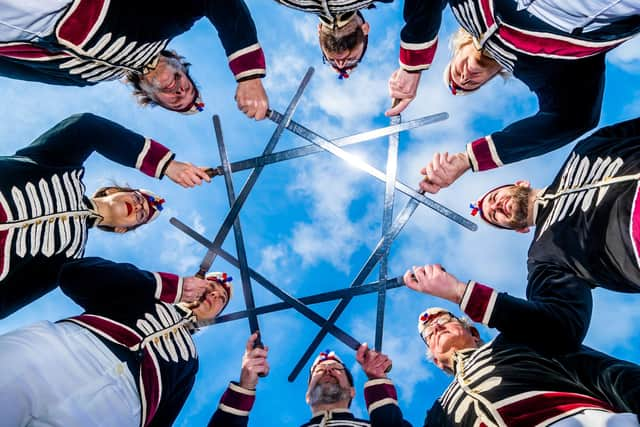Sword dancing in Yorkshire: Why the ancient custom is alive and well in Yorkshire
This ancient custom, with evidence of people dancing with swords over hundreds of years, was to fall out of fashion along with the demise of country dancing in schools.
Now it appears to be picking up pace with a new enthusiasm and an injection of spirit.
Advertisement
Hide AdAdvertisement
Hide AdJames Merryclough of the Handsworth Traditional Sword Dancers said: "This isn't a dying tradition. This is a living, breathing tradition that is continuing to reinvent itself. There is a renewal, a new era. It's not there to stand still.


"It's performance. It's fitness. It's a really unique hobby. People are surprised. And it's something we do here and now, not just for tradition, but because it's enjoyable."
At one time, many villages would have had their own dance but now few survive. Across the UK, five groups still dance the same dance unbroken. In Yorkshire, there's Handsworth, and Grenoside. Riccall, Goathland, and Flamborough.
In Sheffield, the Handsworth team are national champions. Much like Eurovision, it means the city is this year to host the finals, bringing 20 teams from across the country in October.
Advertisement
Hide AdAdvertisement
Hide AdIt's dancing with swords, in dragoon-style costume. The swords are around 1m long. It's weaving and ducking, and jumping in time, all to a jaunty tune.
To Mr Merryclough, as vice-captain, it's important to hold more than one string to its bow. The team dances its traditional dance, in formal costume. It also has written three more.
Critically, he said, it's the Sheffield dance scene. There must be 12 folk teams. And while it may historically be viewed as a bit "little England", here it's more "folk movement protest".
"Sword dancing has had its peaks and troughs, and has probably been on a bit of a downer for a few decades," he said. "Now it's on the up again, because it keeps itself relevant."
Advertisement
Hide AdAdvertisement
Hide AdIn older times, teams were insular. It might be miners, brothers and cousins, who all lived on the same street. In fact, under the first folk collection of its kind with Cecil Sharp in the early 1900s, dancers in some small villages hadn't even known of the existence of others.
Now it might be a university worker, or a steel worker, or a woman. With one member just joined, he is following in the footsteps of his grandfather and great-grandfather before him.
Perhaps the oldest known sword dancer is engineer Les Seaman, who was 86 on Thursday. On Boxing Day he danced his 60th annual dance for the Handsworth Traditional Sword Dancers, having joined aged just 18.
Over six decades he has seen many changes. As a lad, country dancing was taught in PE; he learned with YHA. Many dancers then were school teachers, now he has seen every trade.
Advertisement
Hide AdAdvertisement
Hide AdTo the great-grandfather of seven, there is a skill to it, but most of all it's about enthusiasm.
"It's not running a marathon but you need to have stamina," he said. "Until you put the steel sword in your hand, you don't realise. It's a heavy sword, and we've got eight of them."